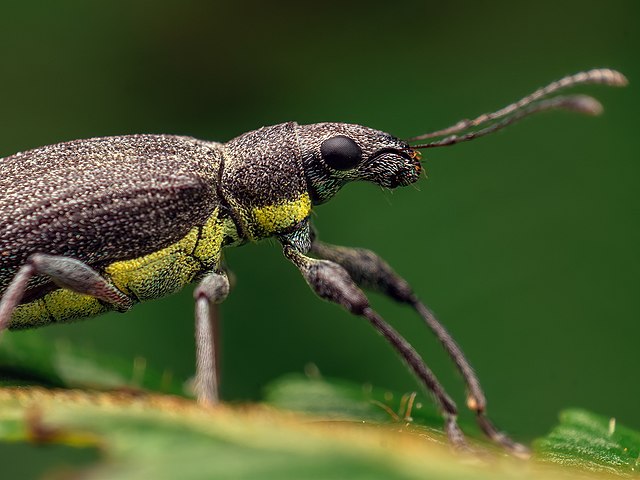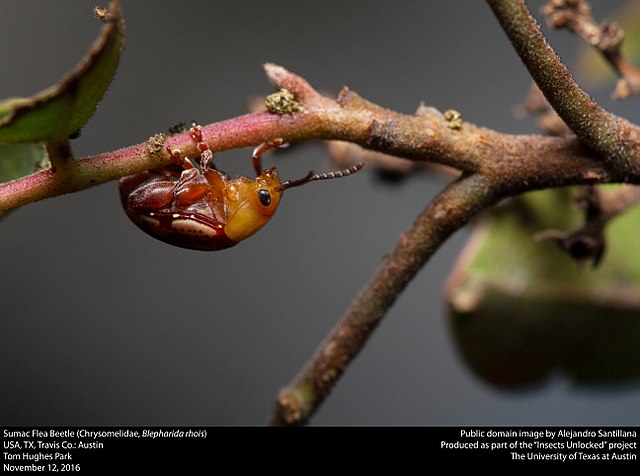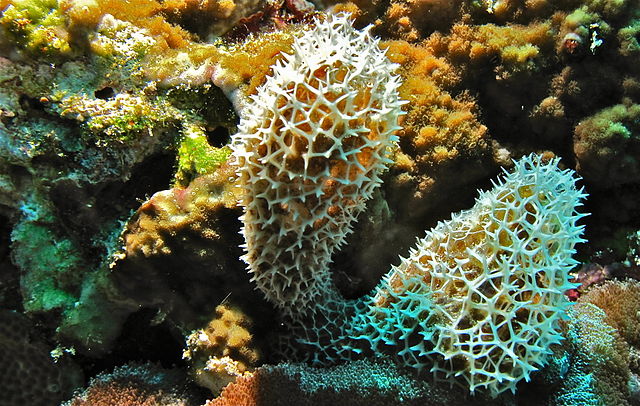Intro
When I was researching for The Cannabis Terpene Experience, the strange dichotomy that terpenes depict was rather eye-opening. Terpenes carry with them medicinal properties of enormous magnitude, such as anticancer properties [1], anti-anxiety properties [2,3], and an effectiveness against bacteria [3], parasites [4], and viruses [5] including COVID-19 [6].
These properties resemble the yin and yang — some kind of cosmic balance of healing (of us) and annihilation (of things that hurt us). All sorts of thoughts danced in my brain because although I was (and am) an avid anthophile, I did not know the full extent of specific plants’ philanthropy, as told by the scientific literature.
And while I knew that plants can defend themselves, I became mesmerized by the weaponized wrath that a plant can wield with its arsenal of terpenes. Juxtaposed to the heavenly or hellish powers of the terpene, depending on a specific organism’s vantage point, is the fact that darling, vital honeybees communicate parent to child and amongst the adults using terpenes. So, terpenes interweave themselves throughout sentient nature, performing all sorts of tasks running the spectrum from aiding to annihilating. It’s some of the functions of terpenes in nature that I’d like to explore in this article.
Love
We’ll start with the love potion and the bewitching scent of the terpenoid nerolidol. Male red spider mites heel to the scent of nerolidol (as well as geraniol and farnesol), which can be found in plants like corn and tomatoes, but also jasmine, magnolias, and cannabis. The male mite dutifully watches over the female about to emerge from her cocoon, drawn by terpenes emanating from within. [6]
Death
With nerolidol, though, the loveliness in the mite’s story quickly turns to deathly intentions. Nerolidol is a well-known bodyguard of many plants by, for example, signaling to carnivorous mites to come feast upon invading herbivore spider mites. Yin and yang — Earth in harmony — hired bug muscle — however you slice it, nerolidol’s power puts on a display that doesn’t disappoint.
Communicate
Mother Earth has more wild tales to tell. Some regard another terpenoid called geraniol, common to attractive plants like geraniums, roses, hops, and cannabis. Precious honeybees utilize geraniol as part of a cocktail of molecules collectively known as the Nasanov pheromone. [7] Worker bees emit this pheromone to help navigate foraging bees back to their homes with the food.
Aphids release β-farnesene to sound the alarm that an attack is imminent, letting other aphids know to disperse. [8] While β-farnesene might help keep aphids safe, it too has a dark side. The pine sawfly lays eggs on pine twigs, the process of which releases a volatile cocktail in which β-farnesene is the primary active ingredient. A parasitic wasp picks up the scent and flies to parasitize the eggs. [9]
Plants communicate chemically as well, especially when they are being eaten. Their fragrant cries for help can signal eaters of herbivores to come to their rescue. Such is the case with lima bean plants. [10] What’s more, evidence points to chemical communication through the air from one plant to neighboring plants cautioning to the presence of predators. Amazingly, some studies have found that plants responded to their neighbor’s aerial messages by bolstering their own chemical defenses. [11] Who says plants can’t talk!
Repel
While the honeybees like geraniol, mosquitoes loathe it. In fact, geraniol has been shown to be a more effective repellant of mosquitoes than citronella. [12] A study of citronella, linalool, and geraniol diffusers placed six meters (approximately 20 feet) from mosquito-containing traps demonstrated abilities to repel mosquitoes by 22%, 58%, and 75%, respectively. [12]
Mama and Baby Bee
Another terpene that honeybees use to communicate is ocimene. Human babies cry when they want food, but honeybee larvae produce trans–β-ocimene to express their hunger. [13] The strongest concentrations of trans–β-ocimene are emanated from the time just after the larvae have hatched to when they are three days old, illustrating the importance of the terpene exchange during fragile periods of growth
Protect
Taking a lesson from Mother Nature, farmers can tap into what plants already know. For example, there are various pests that damage vital food crops such as corn and wheat. Borers, weevils, and their friends likely populate the nightmares of farmers given the destruction they can quickly cause. Luckily, there are terpenoids like camphor, which demonstrated its power when applied to filter paper and offered to the wheat weevil, maize weevil, red flour beetle, and the larger grain borer. [14] Camphor foiled the pests’ plans, repelling 80-100% of the bugs, and had the added ability to inhibit the development of eggs and other immature growth stages, providing a weapon against all stages of beetle and weevil life.
Offend
The sumac flea beetle plasters its own back in its feces. It does this to create a cheap shield out of readily available material. Why? The beetle can defend itself with its malodor against ants, who, having wandered within the beetle dung-armor, have been seen fervently cleaning themselves. Researchers fed the beetles just lettuce and found that the beetles were left weaponless. [15] When the shields were chemically analyzed, fatty acids, tannins, and the terpenoid phytol were detected. These molecules were also found in the sumac tree, once again demonstrating the symbiosis to be found throughout nature, where one form of life helps another.
In the Ocean
The battles involving terpene weapons aren’t just relegated to land, as many marine species utilize terpenes for protection. [16] For example, green algae contain a sesquiterpene called caulerpenyne that provides defense against mastication by sea urchin. [17] Sesquiterpenoids in Dysidea sponges help prevent attack by spongivorous fish (Pomacanthus imperator). [18]
Outro
Terpenes are all around us. They amazingly engage in various battles on land, through the air, and in the sea. They provide communication lines between plants and their neighbors for good (warnings) or ill intentions (allelopathy). They repel, eradicate, and terminate, and yet, they are simultaneously, remarkably beneficent for humankind and many other forms of life on our Earth.
While cannabis has popularized these dear molecules in modern society, they’ve been here all the time, spread ubiquitously throughout nature. We already know some of what these selfless substances can offer, but with increasing regularity, we are unraveling even more of the mysteries authored by Mother Nature.
References
[1] Cho M, So I, Chun JN, Jeon JH. The antitumor effects of geraniol: Modulation of cancer hallmark pathways (Review). Int J Oncol. 2016;48(5):1772-1782. [journal impact factor = 3.899; times cited = 48][2] Harada H, Kashiwadani H, Kanmura Y, Kuwaki T. Linalool odor-induced anxiolytic effects in mice. Front Behav Neurosci. 2018;12:241. [journal impact factor = 2.775; times cited = 29]
[3] Wanner J, Schmidt E, Bail S, et al. Chemical composition and antibacterial activity of selected essential oils and some of their main compounds. Nat Prod Commun. 2010;5(9):1359-1364. [journal impact factor = 0.484; times cited = 26]
[4] Rottini MM, Amaral AC, Ferreira JL, et al. In vitro evaluation of (-)-α-bisabolol as a promising agent against Leishmania amazonensis. Exp Parasitol. 2015;148:66-72. [journal impact factor = 1.690; times cited = 27]
[5] Armaka M, Papanikolaou E, Sivropoulou A, Arsenakis M. Antiviral properties of isoborneol, a potent inhibitor of herpes simplex virus type 1. Antiviral Res. 1999;43(2):79-92. [journal impact factor = 4.101; times cited = 113]
[6] Chatow L, Nudel A, Nesher I, et al. In vitro evaluation of the activity of terpenes and cannabidiol against human coronavirus E229. Life (Basel). 2021;11(4):290. [journal impact factor = 2.991; times cited = 0]
[7] Boch R, Shearer D. Identification of geraniol as the active component in the Nassanoff pheromone of the honeybee. Nature. 1962;194:704–706. [journal impact factor = 42.778; times cited = 92]
[8] Hardie J, Pickett JA, Pow EM & Smiley DWM. in Pheromones of Non-Lepidopteran Insects Associated with Agricultural Plants (eds Hardie, J. & Minks, A.K.) 227–250 (CAB International, Wallingford, UK, 1999). [times cited = 327]
[9] Hilker M, Kobs C, Varama M, Schrank K. Insect egg deposition induces Pinus sylvestris to attract egg parasitoids. J Exp Biol. 2002;205(Pt 4):455-461. [journal impact factor = 3.014; times cited = 206]
[10] Heil M, Silva Bueno JC. Within-plant signaling by volatiles leads to induction and priming of an indirect plant defense in nature. Proc Natl Acad Sci USA. 2007;104(13):5467-5472. [journal impact factor = 9.412; times cited = 572]
[11] Dicke M. & Bruin J. Chemical information transfer between plants: back to the future. Biochem. Syst. Ecol. 2001;29:981–994. [journal impact factor = 1.085; times cited = 152]
[12] Müller GC, Junnila A, Butler J, et al. Efficacy of the botanical repellents geraniol, linalool, and citronella against mosquitoes. J Vector Ecol. 2009;34(1):2-8. [journal impact factor = 1.442; times cited = 69]
[13] Maisonnasse A, Lenoir JC, Beslay D, Crauser D, Le Conte Y. E-β-ocimene, a volatile brood pheromone involved in social regulation in the honeybee colony (Apis mellifera). PLoS One. 2010;5(10):e13531. [journal impact factor = 2.740; times cited = 102]
[14] Obeng‐ofori, D., Reichmuth, C., Bekele, A., & Hassanali, A. (1998). Toxicity and protectant potential of camphor, a major component of essential oil of Ocimum kilimandscharicum, against four stored product beetles. International Journal of Pest Management. 1998;44:203-209. [journal impact factor = 1.131; times cited = 143]
[15] Vencl F, & Morton T.C. The shield defense of the sumac flea beetle, Blepharida rhois (Chrysomelidae: Alticinae). Chemoecology. 1998;8:25-32. [journal impact factor = 1.975; times cited = 43]
[16] Paul VJ, Ritson-Williams R. Marine chemical ecology. Nat Prod Rep. 2008;25(4):662-695. [journal impact factor = 2.158; times cited = 168]
[17] Erickson AA, Paul VJ, Van Alstyne KL, Kwiatkowski LM. Palatability of macroalgae that use different types of chemical defenses. J Chem Ecol. 2006;32(9):1883-1895. [journal impact factor = 2.142; times cited = 93]
[18] Paul VJ, Seo Y, Cho KW, Rho JR, Shin J, Bergquist PR. Sesquiterpenoids of the drimane class from a sponge of the genus Dysidea. J Nat Prod. 1997;60(11):1115-1120. [journal impact factor = 4.021; times cited = 29]
Image Credits: MartinB29, CC BY-SA 4.0, via Wikimedia Commons; Aleksey Gnilenkov from Moscow, Russia, CC BY 2.0, via Wikimedia Commons; Joao Burini, CC BY-SA 4.0, via Wikimedia Commons; Insects Unlocked, CC0, via Wikimedia Commons; Bernard Dupont from France, CC BY-SA 2.0 via Wikimedia Commons; NOAA Mr. Mohammed Al Momany, Aqaba, Jordan, Public domain, via Wikimedia Commons












